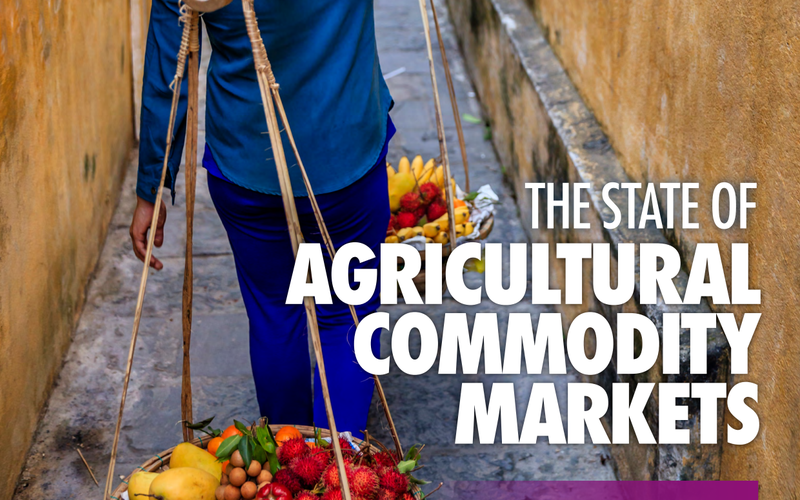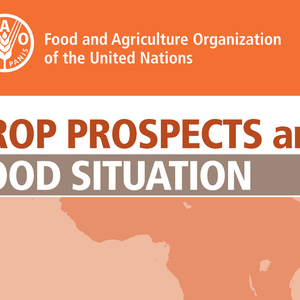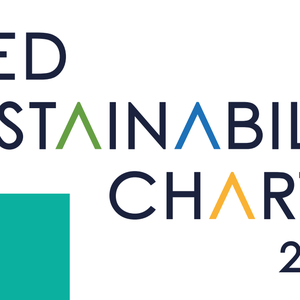The new edition of The State of Agricultural Commodity Markets focuses on how markets can bring us closer to achieving the 2030 Agenda for Sustainable Development. SOCO 2020 offers a detailed analysis of the major global trends in agri-food markets and trade to identify how to reap economic, environmental and social gains and spur overall development. The report makes an important contribution to the debate on how well-functioning markets can contribute to inclusive economic growth and sustainable development. SOCO 2020 discusses policies, innovative mechanisms and digital innovations that can promote the participation of developing countries and smallholder farmers in global value chains. The report also looks at policy responses to address the impacts of the COVID-19 pandemic on food value chains, both nationally and globally.
The State of Agricultural Commodity Markets 2020 (SOCO 2020) argues that global trade and well-functioning markets lie at the heart of the development process as they can spur inclusive economic growth and sustainable development, and strengthen resilience to shocks. “We need to rely on markets as an integral part of the global food system. This is all the more important in the face of major disruptions, whether they come from COVID-19, locust outbreaks or climate change,” wrote FAO director-general, Qu Dongyu.
The report estimates that about one-third of global agricultural and food exports are traded within a global value chain and cross borders at least twice. The rise of global value chains is driven by income growth, lower trade barriers and technological advancements, which have transformed markets and trade processes, linking farmers to traders and consumers across regions and countries.
“Global value chains can make it easier for developing countries to integrate into global markets. As they link our food markets closely, they also provide a mechanism to diffuse best practices to promote sustainable development,” said the FAO director-general.
Smallholder farmers, however, are often missing out on the benefits of global value chains. Furthermore, the emergence of global value chains with the stringent food quality and safety requirements could further marginalize smallholders. “We need to redouble efforts to include smallholder farmers in modern food value chains, thus securing rural incomes and food security in both rural and urban areas,” said Qu.
To achieve this, there is a need for broad policies to create an environment that enables markets to flourish and bolsters smallholders' participation in global value chains - for example, better rural infrastructure and services, education and productive technology.
Key findings of the report are:
- International agri-food trade has been driven by technological progress, urbanization, population and income growths, lower transport costs trade policies and a decline in average import tariffs.
- Upper and lower middle‐income countries together have increased their share in global agri‐food exports from about 25% in 2001 to 36% in 2018.
- While global agri-food trade has doubled since 1995 in real value, its growth rate has been slower since the 2008 financial crisis. This is expected to be further impacted by the COVID-19 pandemic.
- The 2008 financial crisis and consequent economic slowdown stalled the evolution of agri-food global value chains, and the COVID-19 pandemic could further disrupt their potential in global trade and growth.
- Digital technologies are transforming all stages of the food value chain - from farm to table. They improve efficiency, create jobs and save resources. But it is difficult to foresee all the impacts technological innovation can have on how we grow, process, trade and consume food.
- While countries in Europe and Central Asia, and East Asia and the Pacific tend to trade within the same regions, countries in South Asia, Latin America and the Caribbean, sub-Saharan Africa, North America, and the Middle East and North Africa trade more globally. About 90% of exports in agricultural commodities from sub-Saharan Africa, and Latin America and the Caribbean are destined for other regions.
- Trade will continue to play an important role in global food security and nutrition by moving food from surplus to deficit regions.
- Regional trade agreements can stimulate global value chain participation and spur institutional and policy reform. However, as many vulnerable countries continue to rely on global markets, the promotion of the multilateral trading system is important.
- The larger part of the agri-foood trade is made up of processed food products.
Download the report here.










